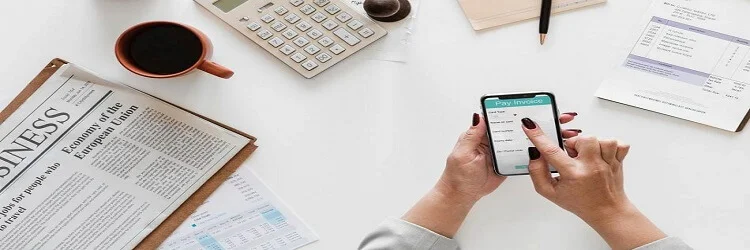What is Procure to Pay? Every sector likes to sling about acronyms. It's an often appreciated shorthand that saves time, but it shows that you're in the game, you know what you're talking about. An insider. The military, government, sports, science, and business love acronyms.
So here we go - P2P - the P2P Cycle, and the P2P Process all speak to the same thing. The Process of getting the raw material to be used in manufacturing a "widget" (from Wikipedia: Widget (economics), a placeholder name for an abstract unit of production, such as manufactured device or other product), and paying for that raw material.
It is the process of obtaining the raw materials needed for manufacturing a product or providing a service and making payment for it. That's all there is to it! That's the P2P Meaning! So, the answer to What is P2P is quite simple.
But the process itself is crucial, and a little more complicated than the acronym. And those complications will be the topic of our discussion here.
Nine Essential Steps in the Procure to Pay Cycle
We've used a simple term to describe the process, now let's examine the process itself. We've broken it down into the separate components.
- The journey begins with a business identifying what they need to make their widget, when they need it, how much of it is required, and what they can afford to pay for it to make a profit and sell the finished product.
- The enterprise researches where they can get those raw materials.
- If there is more than one supplier, the business prepares a set of requirements, such as price, quality, tech specs, and delivery time, and asks potential suppliers to give them a bid.
- After negotiating the terms, if necessary, the company prepares a purchase order or contract that includes all the information needed to get what they want, when they want it, and at what price.
- The contract is sent to the supplier, and if agreed to, the supply of the raw materials will start.
- At this point, the purchasing department will begin to prepare a goods receipt, which details what is delivered.
- If the goods' receipt matches what was in the purchase agreement, then payment, if not already made, will begin. Exceptions in amount may be made for the material not being up to specs, not on time, or not the right amount. This may set off a whole new negotiation regarding the payment and replacements or refunds.
- If the delivery is verified, a payment invoice is generated and approved.
- And the cycle ends when the supplier has been paid the agreed-upon amount in the method specified.
Nine important Steps of Procure to Pay Process. Demystified.
As with any transaction, the devil is in the details. Procure to Pay seems straight forward enough, but a careful examination of the process reveals a minefield of potential traps. Let's point out a few:
- Data Entry - "To err is human, to…" well, you know the rest. You can forgive, but here, as with many transactions, there will be damage done. Don't worry about the time it takes to double and triple check all the numbers and specs. It's worth it.
- Paper Documentation - "Get it in writing" holds here as much as anywhere else. Ensure that everything is documented, all the responsible parties have signed off on all phases of the deal.
- Inefficiencies - "Haste makes waste" was never a more important rule to observe than here. Failure for all team members to play their role can have significant consequences. Keep an eye on the chain of events involved in the deal. That might save you a lot of headaches later.
- Errors - 'With a fine-toothed comb,' check and check again, and then have someone else check it. There's a reason that pilots use a written checklist before the flight. Even if you've done something a million times before, there is the chance that you can forget a crucial element.
- Quotation Analysis and Verification - "Check, check, and double-check" didn't come into widespread use without reason. How many times have you been bitten by a dropped number or word in a document that EVERYONE has checked?
- Invoice Validation - "Sweat the small stuff" still makes sense. Don't assume anything, because you know what that does...
Seize the Day. Outsource your P2P Cycle.
So, what have we learned? It's a lot more complicated than it looks at first glance. The P2P Cycle is filled with terrifying possibilities for sheer disaster.
But this story can have a happy ending, again and again.
Consider what many business leaders already know and do. Engage a Business Process Outsourcing (BPO) partner to handle your P2P. someone that does this kind of work day in and day out. It's more accurate when done by an experienced, trained, and skilled team. It's less expensive because that team is not in-house, so there's no employee overhead. A streamlined department that can handle the work quickly, with reduced errors, and no redundant functions. Trustworthy and quick to react, with state of the art training and practices. A team that stays on top of the latest rules and regulations. That also has the most current software and hardware - at no capital expenditure from you.
And like any competitive business, there are leaders and then the rest. Make sure you pick a leading BPO, one with decades of experience, continuing training, smart, innovative employees dedicated to making this collaboration a success.
Someone like Rely Services. A driving force for change in the world of business.Contact them today for a no-obligation assessment of your needs, and a discussion of the many ways of partnering with them can help you achieve your goals.

Leave A Reply